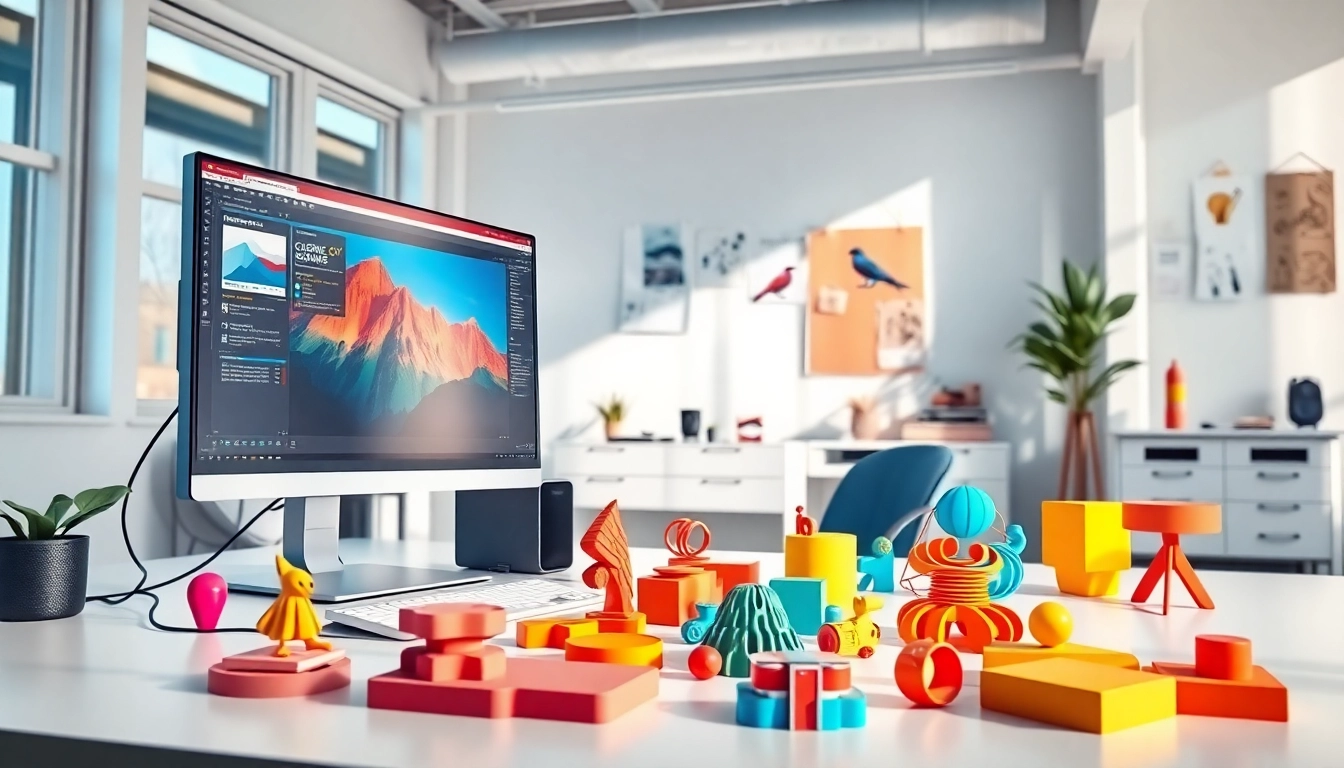Understanding 3D Modeling Services
In a world increasingly dominated by visual content, 3D modeling services have emerged as a critical component across various industries. These services enable businesses to create digital representations of physical objects in three dimensions, allowing for realistic visualizations and interactions. This article delves deep into what 3D modeling services entail, exploring their types, applications, and benefits to help businesses make informed decisions.
What are 3D Modeling Services?
3D modeling services involve the creation of a three-dimensional representation of an object or environment using specialized software. These models can be utilized for various purposes, including visualization, simulation, and rendering. The process of 3D modeling typically involves combining various geometric shapes to form complex structures, which can then be textured, animated, or prepared for printing.
Types of 3D Models
There are several types of 3D models, each serving distinct needs based on the industry or specific application:
- Digital Sculpting: This method uses tools resembling traditional sculpting techniques in a digital environment, allowing for organic shapes and intricate details.
- Polygonal Modeling: This is the most common technique involving vertices, edges, and faces to create 3D forms, widely used in video games and animation.
- NURBS Modeling: NURBS (Non-Uniform Rational B-Splines) allows for the creation of smooth curves and surfaces; primarily used in automotive design and industrial modeling.
- 3D Scanning: Real-world objects are digitized into a 3D model using laser or photogrammetry techniques; great for reverse engineering or preserving cultural heritage.
Applications in Various Industries
The applications of 3D modeling services span across multiple industries, showcasing their versatility:
- Entertainment: In film and video games, 3D models are essential for creating visual effects, characters, and immersive environments.
- Architecture: Architects utilize 3D modeling for visualizations of building designs, enabling clients to see and modify their projects before construction.
- Healthcare: 3D modeling assists in medical imaging, producing detailed anatomical models for educational, diagnostic, or surgical purposes.
- Manufacturing: In manufacturing, 3D models streamline prototyping processes, allowing for quicker iterations and reduced production costs.
- Automotive: The automotive sector employs 3D modeling for designing and testing components, enhancing efficiency and safety features.
Benefits of Outsourcing 3D Modeling Services
Businesses often face the dilemma of whether to handle 3D modeling in-house or outsource it. Here are several compelling reasons to consider outsourcing these services:
Cost-Effectiveness
Outsourcing 3D modeling can significantly reduce costs associated with hiring full-time staff and purchasing expensive software licenses. Service providers often offer competitive pricing structures that can fit various budgets, allowing you to allocate resources more effectively.
Access to Expertise
Working with specialized 3D modeling services grants access to skilled professionals proficient in the latest technologies and trends. These experts can provide high-quality models created efficiently, which may be challenging for in-house teams lacking experience.
Scalability and Flexibility
Outsourcing allows companies to scale their projects based on demand. Whether you need a single model or an entire collection, flexibility in outsourcing means you can easily adapt to changing project requirements without long-term commitments.
Choosing the Right Provider for 3D Modeling Services
Identifying an appropriate 3D modeling service provider can be challenging, as the quality and expertise vary widely. Here are essential considerations to help you make the right choice:
Key Factors to Consider
- Experience and Portfolio: Assess the provider’s experience in your industry and their portfolio showcasing previous work, ensuring they can meet your specific needs.
- Technology and Tools: Confirm that the provider uses cutting-edge tools and technologies; this will ensure high-quality and innovative outputs.
- Customer Support: Responsive customer service can make a significant difference, especially when navigating project adjustments or troubleshooting issues.
Questions to Ask Potential Providers
To vet potential providers, consider asking the following questions:
- What is your typical turnaround time for projects similar to mine?
- Can you provide references or case studies from previous clients?
- How do you handle revisions or client feedback during the modeling process?
Reviewing Portfolios and Client Feedback
Always review the provider’s portfolio and client testimonials. Look for examples that resonate with your project goals and verify the quality and creativity demonstrated. Client feedback can provide insights about reliability and communication practices.
Best Practices for Effective 3D Modeling
Successful 3D modeling requires clear communication and collaboration. Here are best practices that can enhance the outcome of your modeling projects:
Clear Communication and Briefing
Providing detailed, clear briefs to your modeling team is vital in conveying your vision. Include necessary specifications, reference materials, and any constraints to ensure that the model aligns with your expectations.
Iterative Design Processes
Incorporate an iterative design approach where models can be adjusted based on initial feedback. This method fosters creativity and allows for problem-solving during the development phase, resulting in a more refined final product.
Importance of Feedback
Regular feedback loops throughout the modeling process prevent miscommunication and ensure that the project remains on track. Feedback should be constructive and specific, guiding the artists towards desired outcomes.
Future Trends in 3D Modeling Services
The landscape of 3D modeling services is ever-evolving, driven by technological advancements and changing market dynamics. Here are some notable trends shaping the future:
Impact of AI and Automation
Artificial Intelligence is leveraging automation within 3D modeling, enabling faster processes and more sophisticated designs. AI can assist in tasks such as generating textures or automating repetitive modeling steps, significantly reducing production time while enhancing quality.
Emerging Technologies in 3D Modeling
Emerging technologies like Virtual Reality (VR) and Augmented Reality (AR) are becoming more integrated into 3D modeling. These technologies allow clients to experience designs in immersive environments, improving engagement and understanding of the final product.
Predicted Industry Shifts
As more industries recognize the value of 3D modeling, we can expect an increase in demand across sectors. This demand will drive innovation in software solutions, making modeling more accessible to smaller businesses and startups.







